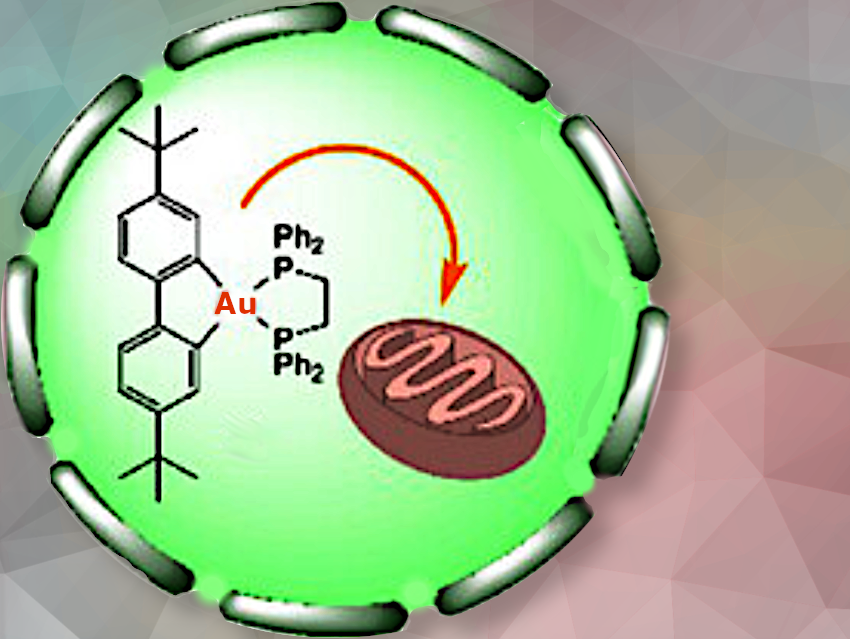Gold Complexes as Antitumor Agents
Precious metals play a vital role in pharmaceuticals, with platinum-based drugs like cisplatin being well-established in cancer therapy. Recently, attention has turned to gold as a promising alternative. A French research team has conducted the first study on the speciation and distribution of an organogold(III) complex in cancer cells, shedding light on how tailored “organogold” compounds could open new avenues for cancer treatment.
Gold has a unique electronic structure giving it exceptional chemical traits that translate into subtle interactions with biological molecules. However, little is known about how gold(III) complexes with antitumor activity behave in a biological environment. Do they change? Are they reduced to gold (I) or metallic gold? Where in the cell do they attack?
Researchers led by Benoît Bertrand, Michèle Salmain, Sylvain Bohic, and Jean-Louis Hazemann at Sorbonne Université, the Université Grenoble Alpes, CNRS, INSERM, and the European Synchrotron Research Facility, have carried out a comprehensive study on the chemical reactivity and antitumor activity of various gold(III) complexes. They used a combination of different methods based on synchrotron X-ray radiation: cryo-synchrotron radiation-X-ray fluorescence (cryo-SR-XRF), cryo-synchrotron radiation-X-ray absorption (cryo-SR-XAS), and high-resolution mass spectrometry.
Stability and Antitumor Activity in Cancer Cells
The study focused on cationic biphenyl gold(III) complexes with aryl, alkyl, and diphosphine ligands, known as [(C^C)Au(P^P)]+ cations. These complexes feature a gold atom bonded to two carbon atoms of the first ligand and two phosphorus atoms of the second, clasping like two sets of tongs. The analyses demonstrate that all the complexes examined were stable in both cell-free environments and inside lung cancer cells. They were not reduced and did not release their ligands to form new bonds.
The complexes were demonstrated to be toxic against tumor cells. A “dppe complex” (biphenyl gold(III) complex with 1,2-diphenylphosphinoethane (dppe) ligand) was the most active. The team used a special setup of synchrotron cryo-X-ray nanoanalysis to “map” elements including gold in frozen-hydrated lung cancer cells with nanometer-scale resolution and locate the dppe complex. The dppe complex was found to selectively accumulate in the mitochondria, the “powerhouses” of the cells. The advantage of this method is that no labeling, which could distort the result, is needed. This gives the scientists a unique clarity when examining cells in their near-native state at the nanoscale.
Mechanism of Action
By using X-ray absorption spectroscopic methods, the team obtained important information about the valency, geometry, and oxidation state of the gold atom in the complex. These findings indicate that the antitumor activity of the gold complexes primarily stems from the native cationic species (the [(C^C)Au(P^P)]+ cations). It probably results from interactions between the whole complex and specific biological molecules, whose function is disrupted. This differentiates these drug candidates from other, differently structured gold complexes, which generally trigger cell death through direct coordination of the gold center with biomolecules.
These results establish a relationship between the chemical structure and reactivity of a gold complex, its speciation in the cell, and its cytotoxicity.
- Stability and Mitochondrial Localization of a Highly Cytotoxic Organogold(III) Complex with Diphosphine Ancillary Ligand in Lung Cancer Cells,
Hester Blommaert, Clément Soep, Edwyn Remadna, Héloïse Dossmann, Murielle Salomé, Olivier Proux, Isabelle Kieffer, Jean-Louis Hazemann, Sylvain Bohic, Michèle Salmain, Benoît Bertrand,
Angewandte Chemie International Edition 2025.
https://doi.org/10.1002/anie.202422763





